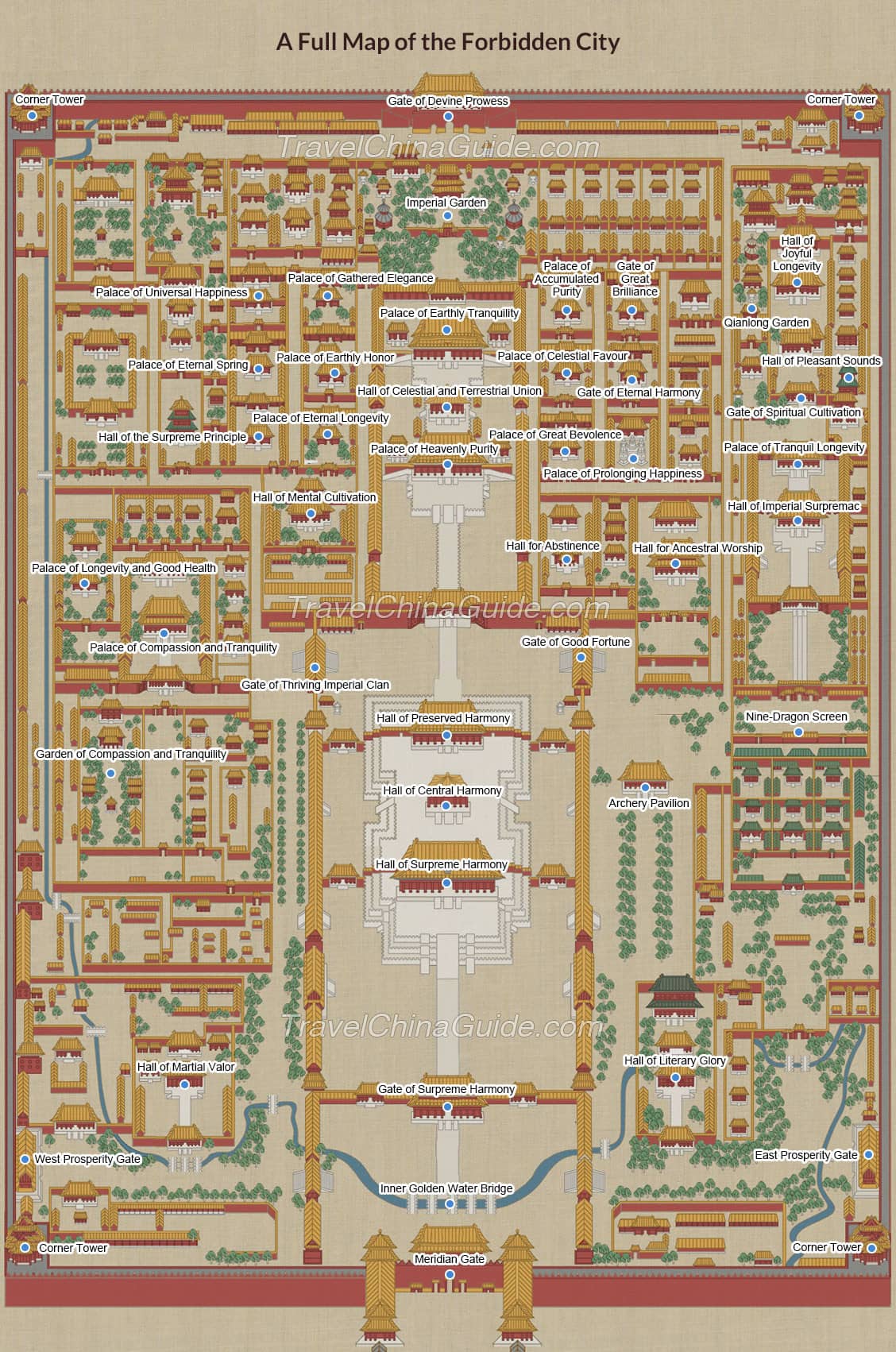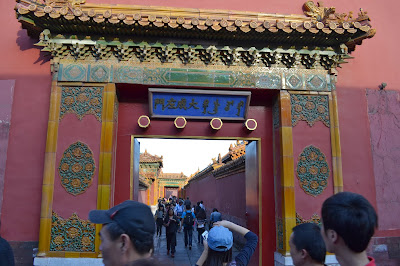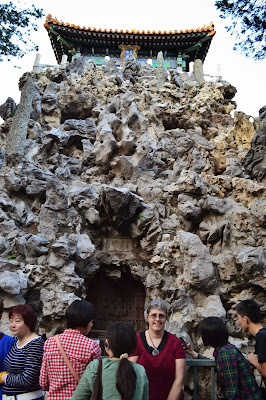The Forbidden City
The
Forbidden City is also know as the Palace Museum
or the Purple Forbidden
City.
In ancient times, the emperor was said to be a son of Heaven, and therefore
Heaven's supreme power was bestowed upon him.
The emperors' residence (the forbidden city) on earth was built as a replica of the Purple Palace
where God was thought to live in Heaven.
During
the time of the Ming and Qing dynasties entrance to the "city"
was
gained only by the emperor and those he chose - thus it was
"forbidden"
to
almost all of the Chinese people.
 |
This is
a map of the original city built in 1420 and used by the Ming and Qing
Dynasties.
The
bottom half of the map with the large gate at the bottom and the four
large
courtyards above - is now Tian'an men Square.
You
will notice that all of the city is surrounded by a moat.
The
moat is 20 feet deep and more than 50 feet wide.
The
hill that is in shadow at the top of the map was created
from
the dirt removed to build the moat.
Little
"rivers" cross the city between the moat on each side.
The halls
where the Emperors conducted business are all elevated.
A
close-up of the details in painting and carving of the buildings
A
close-up of the roof. Each roof has these little creatures.
Supposedly
the more creatures on the roof, the higher the status of the people living in
the home.
An example of
the carved staircases. Notice that even the steps had intricate carvings.
Yellow
was the color used to symbolize the royal family.
All of
the roofs in the Forbidden city are yellow and you will see it used in all of
the paintings on the buildings
Close-up of
one of the thrones that were used by the emperors.
A Brass Lion
The entrance to the garden.
There are gardens on both sides of the main courtyards
that run down the center of the city.
We were only
allowed to see this one.
I would love to go back in time and see what the
forbidden city looked like during the Ming dynasty.
It is still beautiful, but it must have been
absolutely stunning.
Dui Xiu Shan.
(More impressive in person than photo).
The Chinese believe in Feng Shui - creating balance in
all things.
In their gardens there is always running water and an
artificial "mountain"
so that the energy can flow freely through the garden.
This is the pagoda on top of the artificial hill that
was created from digging the moat.
It is about 50-60 feet high.
The moat
The city was completely surrounded by the moat and a
wall 10 meters tall. The wall was 10 meters wide at the bottom,
tapering off to 6 meters wide at the top. So
IF you could make it across the moat,
the slope and height of the wall made it impossible to
climb.
The north entrance to the city (near the pagoda on the "hill")
 |
|
The
doors at the bottom are entrances to the next large courtyard.
There were originally 10 courtyards through the center of the city.
The
doors to each courtyard are about a foot thick and sit on top of a threshold.
The
thresholds vary in height throughout China to symbolize status -
with
the emperor's being the tallest.
The
Chinese are very superstitious.
They
believed that ghosts roamed the streets, but the ghosts could not jump or step
over things.
Therefore
the high thresholds would keep the ghosts from getting into their houses.
|

Close-up of the roof details
(the posts above the door represent the families status - the more posts the higher the status.)
|
 |
| An example of the painting and detail on every building |





















No comments:
Post a Comment